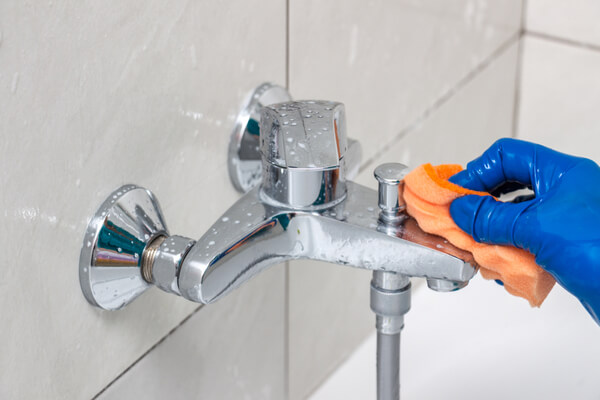If you’re tired of smelling soapy water from the drain, there are several easy ways to remove calcium buildup in pipes. These methods may require a few tools. For example, you’ll need hydrochloric acid, baking soda, vinegar, and a wire brush or sponge. And make sure to wear gloves.
White Vinegar Dissolves Calcium
Calcium deposits can cause plumbing appliances to run less efficiently, and white vinegar can help eliminate this problem. A white vinegar solution can also dissolve the build-up in shower drains. To do this, close the water valve and pour baking soda and vinegar into the drain. Let the mixture sit for three to four hours to eliminate the calcium build-up.
Calcium, also known as limescale, is easily dissolved by acid. It is not common in copper pipes, as the concentration must be high for it to cause damage. You can also try using a water softening system, which replaces the hard minerals in your water with softer minerals. PEX pipes, short for cross-linked polyethylene, are more resistant to the build-up of limescale than metal pipes.
White vinegar can also be used as a cleaning agent. In a spray bottle, you can use the acid in vinegar to remove calcium buildup. To use it on your pipes, use a cloth or rubber gloves. Also, keep an extra toothbrush handy to wipe off the calcium deposits.
Baking Soda Adds Abrasiveness
Baking soda is an environmentally-friendly cleaner with a wide range of industrial applications. Its mild abrasiveness helps remove grease, soap, and dirt without scratching. Its crystalline structure creates mild alkalinity, transforming fatty acids in dirt and grease into harmless carbon dioxide. It also serves as a leavening agent in baked goods, releasing carbon dioxide gas during baking.
If you’re looking for a homemade solution to remove calcium buildup from pipes, baking soda is an excellent choice. This powder can be diluted with warm water and will slough off the build-up and soften the mineral deposits. You can also use baking soda to clean porous tile and grout.
Another option is to use a mixture of baking soda and vinegar. This mixture can remove calcium deposits from pipes and other surfaces. The vinegar and baking soda mixture should be mixed thoroughly, and you should wear rubber gloves while mixing the solution.
Using a Pipe Snake
Pipe snakes can be a useful tool in cleaning minor clogs in the pipes. This flexible plastic tool is designed to travel down the pipes, breaking down the build-up and increasing water flow. A coil at the end of the snake is used to catch debris and pull it out. The handle is turned counter-clockwise to remove the clogged pipe.
Pipes that are filled with calcium build-up can cause slow-draining fixtures, weak flushing toilets, and poor water pressure in the house. Calcium is the main mineral found in hard water and coats the inside of water pipes and drains, reducing their internal diameter and reducing their efficiency. The build-up can also lower the water pressure in the house and decrease the volume and efficiency of your water heater.
If you notice white deposits on your dishes and fixtures, it is likely that you have a build-up of calcium in your pipes. The amount of build-up will depend on the type of pipes in your home. However, you can remove the calcium build-up using home remedies and drain cleaners.
Cleaning Your Toilet Bowl Prevents the Build-up
Cleaning your toilet bowl regularly will help prevent the buildup of calcium deposits in your pipes. This buildup can cause cloudy water and slow flushing. To avoid this buildup, you should clean your toilet bowl at least once a week. Make sure to clean under the rim of your toilet as well. Leaving calcium in this area can cause your pipes to break down and cause unpleasant odors. Deep cleaning your toilet tank is also beneficial, as it will prevent clogs, thereby ensuring long-lasting pipe performance.
If you do not have a plunger or a plumbing machine, you can also buy a plumbers cloth or pumice stone at a hardware store. To avoid damaging the pipes, avoid using too much pressure while cleaning the bowl. Commercial cleaners are also available and are specially formulated to remove calcium build-up from toilets. However, these cleaners typically contain acid solutions that can be harmful to kids and pets. You should wear gloves if you use these cleaners. Also, remember to let the cleaning solution sit for several minutes before flushing the toilet again. Or you may contact The Plumber Guys, an expert in all plumbing services in the United States.
One of the most common causes of calcium build-up in the pipes is mineral-rich water. This type of water contains calcium and magnesium. Although hard water doesn’t damage the plumbing, the minerals accumulate around the water line in the toilet bowl over time. As they accumulate, they can become stubborn and harder to remove. Luckily, it’s possible to prevent this build-up from forming in your pipes by cleaning your toilet bowl regularly.
